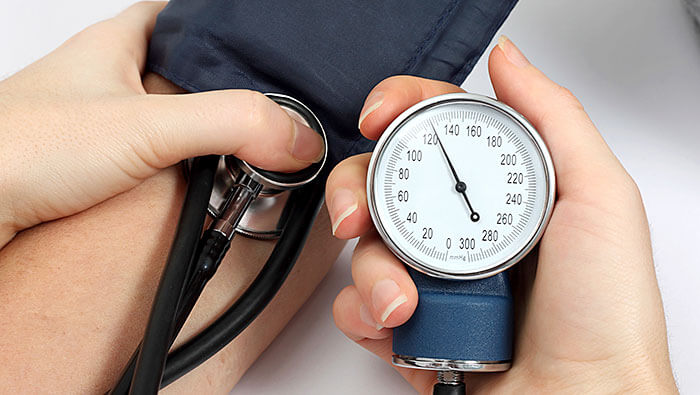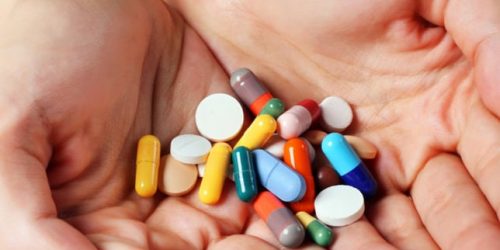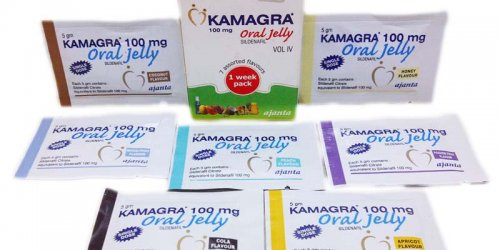Which Hypertension Medicine is better (or More Effective)? And which is the Best?
The answer on this question is not complicated:
- In order to understand this issue, one has to graduate from School of Medicine. Only after that it is possible to make a hypothesis that a medication A for a patient X with one set of diseases will work better than a medication B for a patient Y with another set of diseases. BUT:
- Each patient has unpredictable effect of any medication and level of side-effects. Thus, all theoretical hypotheses on this topic are meaningless.
- Medications inside one class (subject to observation of therapeutic dose) have approximately one effect. Nevertheless, in some cases see point 2.
- When asked, what is better different people will answer in different ways (Tastes differ), as well as different doctors will respond differently.
Let us get all this straightened out. But first note, that this article provided by our pharmacy is exclusively for the purpose of an insight into the classes of antihypertensive medicines. It cannot be used as an instruction for self-treatment! Administration and treatment of hypertension must be conducted by your attending doctor only!
Strategy of Antihypertensive Treatment Selection
When a patient suffering from hypertension seeks medical advice for the first time, he is assigned to pass a number of examinations depending on polyclinic equipment and financial ability of a patient. The results acquired from examination may affect the disease management.

Appropriate treatment must cause pressure loss up to the so-called target ranges (140/90 mm Hg, in case of diabetes – 130/80 mm Hg). If the indicators are higher, the therapy is incorrect. Medical treatment of hypertension must continue for term of life; therefore, its prescription must be evidence based. If blood pressure indicators are not high (150-160 mm Hg), a doctor will first assign a small dose of one medicine. Patient leaves for 1-2 weeks for self-monitoring of blood pressure. If the initial therapy achieves the target ranges, he should take this medication for a longer period and the reason to see a doctor will be an increase in arterial blood pressure demanding a correction of treatment.
Classes of Hypertensive Medications
There are 7 classes of medications:
- angiotensin-converting enzyme inhibitors (ACE inhibitors)
- angiotensin II receptor blockers (sartan or ARB)
- direct renin inhibitors
- beta adrenergic receptor blocking agents
- calcium channel blocker (CCB)
- drugs of central mode of action
- diuretics
Angiotensin-converting Enzyme Inhibitors (ACE inhibitors)
These are medications which in due time have made a revolution in high blood pressure treatment. In 1980 enalapril was synthesized. Now it is the most prescribed medicines in the world notwithstanding the intensive work of pharmaceutical firms aimed at creation of new drugs. Nowadays the analogues of enalapril are issued by more than 30 factories, and this proves its good quality (bad medicines are not replicated). Other medicines of this group do not have significant differences from each other; therefore, let us describe enalapril more thoroughly. Action of the first three groups of medication, angiotensin-converting enzyme inhibitors (ACE inhibitors), angiotensin II receptor blocker (sartan or ARB), direct renin inhibitors, lies in blocking of one of the most powerful vasoconstrictors, angiotensin. These medicines reduce systolic and diastolic pressure not influencing the frequency of the pulse.
The most frequent side-effect of ACE inhibitors is occurrence of ineffective cough in a month or two after the first intake. If the cough occurs, the medication must be substituted (usually by representatives of the group ARB which are more expensive).
The main representatives of this group:
- captopril
- enalapril, berlipril
- lisinopril, dapril
- perindopril
- ramipril
- quinapril
- cilazapril
- fozinopril, monopril
- trandolapril
Angiotensin II Receptor Blockers (Sartan or ARB)
This class of medications was created for patients suffering from cough resulted from side-effects of ACE inhibitors action. Currently neither of the firms producing ARB can state that these drugs’ effect is stronger than the one of ACE inhibitors. This is ascertained by results of many major research studies. The entire effect is achieved by the end of 2-4 weeks of intake; therefore, the estimation of medicine’s action may be assessed only after 2 weeks or more.
The main representatives of the class:
- losartan
- eprosartan, valsartan
- irbesartan
- candesartan
- telmisartan
- olmesartan
- azilsartan
Direct Renin Inhibitors
This class has only one representative. Moreover, even the manufacturer acknowledges that it can’t be used as the only one remedy for treatment of hypertension. It should be taken in combination with other medications.
Representative: aliskiren.
Beta Adrenergic Receptor Blocking Agents
Creators of this medication were the Nobel Prize winners – this was the first case for “industrial” scientists. The main effects of beta-blockers are decreased pulse and pressure loss. Therefore, they are applied mainly by hypertension sufferers with tachysphygmia and in case of combined hypertension – with cardiac angina. Moreover, beta-blockers have a good antiarrhythmic effect; therefore, their prescription is justified in case of accompanying extrasystole and tachyarrhythmia.
These medicines are not recommended for young men, since all representatives of this class affect the erectile function (fortunately, not for all patients) adversely. Among all counter-indications bronchial allergy and diabetes are met, but the experience shows that very often patients with bronchial allergy and diabetes get along together with beta-blockers.
The old representatives of the class (propranolol (anapriline), atenolol) are not suitable for treatment of hypertension because of short effective period.
The main representatives of beta-blockers:
- metoprolol,
- bisoprolol
- nebivolol
- betaxolol
- carvedilol
Calcium channel blockers (CCB)
Pulse Decreasing CCB
Their action is similar to beta-blockers (decreased pulse and pressure loss), but the mechanism is different. Officially this group is approved for treatment of bronchial allergy.
Here is a list of only “long-playing” representatives of the group:
- verapamil
- diltiazem
Dihydropyridine CCB
Modern dihydropyridine CCBs took their place firmly among anti-hypertensive remedies. They reduce blood pressure significantly. It is reported that a long-term intake of the drugs of this group renders prophylactic effect in regards to Alzheimer`s disease. According to the number of the factories manufacturing it, amlodipine is comparable with the most popular ACE inhibitor, enalapril. After the intake of this group, lower lectures and hands may become swollen, but this will go away within a week.
Main representatives of the group:
- amlodipine
- felodipine
- nimodipine
- lacidipine
- lercanidipine
Drugs of Central Mode of Action
The history of this group started with clonidine, which reigned till the beginning of the epoch of ACE inhibitors. Clonidine reduced blood pressure considerably (in case of overdose it led to exanimation). It also caused a horrible dryness of the mouth. Fortunately the epoch of clonidine came to an end, and now this drug may be bought only on prescription and in few drug stores.
The younger medications of this group are deprived of clonidine’s side-effects, but their efficiency is considerably lower. Generally they are used in combination therapy for high-strung patients in case of night character of crises.
Methyldopa is also applied for hypertension treatment of pregnant women because the majority of medications’ classes (ACE inhibitors, sartans, and beta-blockers) affects adversely an unborn child and cannot be used during pregnancy period.
The main representatives are:
- moxonidine
- rilmenidine
- methyldopa
Diuretics
In the mid-20th century diuretics were widely used for hypertension treatment, but with the time experts discovered their disadvantages (in due course all diuretics “wash off” useful substances from organism and cause new cases of diabetes, atherosclerosis, arthragra).
Therefore there are two therapeutic indications for use of diuretics in modern literature:
- Hypertension treatment of elderly patients (older than 70 years)
- As third-fourth medication if the effect of two-three prescribed medicines is not sufficient.
For treatment of hypertension only two medications are taken and often as a part of fixed combination tablets.
Main representatives of the group:
- hydrochlorothiazide – widely used in combined medications
- indapamide
Drugs for Hypotension
Arterial hypotension is a group of various conditions which differ in origin. It is characterized by a drop of arterial blood pressure lower than 90/60 mm Hg. Other symptoms of hypotension are tiredness, lack of energy, vertigo after sudden stand-up, proneness to syncope, paleness, labored breathing, heartbeats after physical activity.
Hypotension treatment requires normalizing of regimen – combination of a good-quality sleep and physical activities. Motor performance must be regular, but shouldn’t overload vessels too much. Medication treatment must be prescribed by the attending doctor for each patient individually.
Main Groups of Medicines for Hypotension Treatment
Vegetal adaptogenes
They have a soft stimulating impact on central nervous system. These drugs suscitate heart-vascular system, eliminate hypersomnia, mental and physical defatigation, and boost arterial blood pressure.
Alpha-adrenergic agonists
This group of medications is required in case of orthostatic disorders, syncope, and hypotensive crises. Midodrine increases blood pressure, brings vasoconstrictor effect by stimulation of alpha-adrenergic agonists, and prevents from blood stagnation in veins. This causes conservation of the same level of circulating blood volume and blood pressure, and improvement of tissues supply with oxygen.
Drugs for central nervous system stimulation
Central nervous system stimulants are able to increase arterial blood pressure, mental and physical working capacity, pick up reaction speed, reduce defatigation and hypersomnia, and enhance attention. They are divided as follows:
- Adrenergic agonists of indirect and combined action
- Analeptical drugs mostly affecting respiratory and vasomotor center
- Analeptical drugs realizing action on spinal medulla level
Anticholinergic agents
Please, note that you must not self-treat. You must consult your doctor for the reason that hypotension causes deterioration of blood supply to cardiac muscle and hypo-oxygenation of cerebrum.
Article by Matthew Nilson MD from Our Team
My Canadian Pharmacy recommends to read this information about Blood Pressure and BP Meds: https://medlineplus.gov/highbloodpressure.html http://emedicine.medscape.com/article/241381-medication https://www.healthlinkbc.ca/medications/ze1256 https://en.wikipedia.org/wiki/Angiotensin_II_receptor_antagonist http://cvpharmacology.com/vasodilator/CCB




